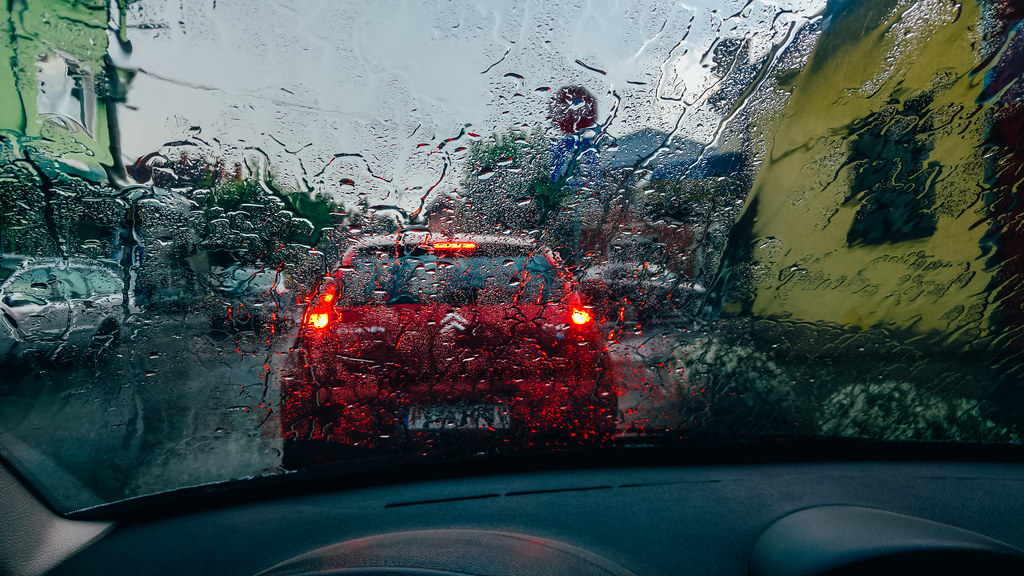Last Updated on February 8, 2023 by
It’s time to have your windshield cleaned to eliminate grease and grime that’s obstructing your vision. A clean windshield gives you a clearer view of what’s ahead, reducing the likelihood of an accident. It would help if you cleaned your windshield every few weeks to remove dirt, smudges, and film. Also, if your windshield is dirty, your defroster will be able to clear off condensation, or ‘fog,’ more efficiently because of the dirt.
Within Your Windshield
The inside of your windscreen may seem like a simple piece of glass, but it actually serves a number of important functions that are crucial for your safety on the road. The interior of your windshield is coated with a thin film that helps to reduce glare and improve visibility in bright light.
This coating can also help protect against scratches and cracks, making it more durable and longer-lasting. In addition, the inside of your windscreen can be equipped with various features such as an embedded antenna, a heating element to defrost and clear away fog, or a heads-up display that projects important information onto the glass.
The inside of your windscreen also acts as a support structure, helping to reinforce the car’s body and keep it intact in the event of an accident. With all of these important functions, it’s important to keep the inside of your windscreen clean and free of cracks and damage.
How does your windshield get so dirty?
Your car’s windshield gets dirty for several reasons, including fingerprints, dog dander, smog, smoke, road dirt, and sea salt from the shoreline. However, off-gassing from the car is the main culprit. There are a variety of plastic and vinyl interior components that contribute to the ‘new car smell,’ which eventually breaks down, becoming trapped in the car to leave an oily residue on the windshield. In most cases, the windshield is perfectly angled to catch many particles. Oily cleaners on the dashboard can further exacerbate this issue, evaporating in the high temperatures and humidity of the summer to form a film that further coats the glass.
How to clean the inside of your windshield?
- Lint-free microfiber rags
- Cleaning glass
- Vinegar
- Rubbing alcohol
Prepare a spray bottle with the solution. Some popular options are as follows:
- Fifty percent alcohol, 50 percent water, and a little white vinegar.
- Seventy percent water, fifteen percent window cleaner, fifteen percent alcohol.
- Use a glass cleaner formulated explicitly for autos rather than ammonia-based cleaners that damaged vinyl, leather, and tints.
- Gather your materials, then get into the passenger seat of your car to access the windshield glass more easily.
- Before cleaning the glass, wipe it down with a clean, dry microfiber towel.
- Next, wipe the glass down with a cloth soaked in rubbing alcohol. Alternatively, you can use vinegar to dissolve sea salt if you live near the coast.
You can spray glass cleaner on a different side of the cloth or grab a clean one, then use it to clean the glass (not the windshield). Whenever the towels become dirty, switch them out immediately. After wiping the glass with up-and-down motions, make sure it is scorched to be streak-free.
- After washing your car’s exterior and wiping down its interior, you should clean the windshield last.
- You will prevent window cleaner from evaporating rapidly in the shade or at a cooler temperature.
- Never clean your windshield with rags you have used elsewhere, even if you’ve washed them. By using wax or other detailing compounds, you might end up with greasy, oily windshields.
Read More: A Comprehensive Guide About How To Remove Sap From Car?
Keep your windows sparkling for a long time
Keeps your windshield looking great now that it has been cleaned! The process is as simple as keeping your car cool and allowing gases to escape. You should park your car whenever possible in a shaded or sheltered area, so your vehicle stays more excellent, such as the garage at your house. It is also possible to prevent off-gassing and the buildup of contaminants in your car by cracking the windows (though this won’t be possible on rainy days).
What causes your windshield to become dirty inside?
It is not difficult to imagine how it gets dirty. Dirt, mud, road tar, sap, bird droppings, bug residue, hard water spots, acid rain, and more can ruin the finish on your vehicle’s exterior. Is the inside any better? It is not exposed to these things. Your windshield is subject to contaminants on the knowledge that it is not on the outside. Smoking residue permeates the seats, the carpet, and the fabric of a vehicle if you smoke (or when you drive someone who does). Your windshield will also be covered with it. Smears and fingerprints from children and slobber and nose prints from dogs (and possibly from children) will also appear on the windshield or any other interior window they can reach.
Several surfaces can become coated with dust outside and dander inside the vehicle. As vapors from your breath and sweat mix with the dust, the windscreen is likely to get dirty. There is also the problem of off-gassing. Plastics that make up your car’s interior emit vapor for many years. Your vehicle will still smell like a new car for many years. Surfaces like your dashboard, door panels, and other parts of your vehicle give off these gases, which stick to your windshield.
Every window of your car, not just the windshield, will be contaminated by any of these contaminants. However, the windshield will often be the hardest to clean. When you get that done, you can handle the rest.
Inside your windshield
Your windshield gets a little less attention in the automatic car wash than the outside, which gets cleaned every time you drive through. Maybe you’re cleaning your car as part of spring cleaning, or perhaps you hate straining to see through glare and goo. What is the best way to clean your car? The answer begins with having the right tools. You don’t need expensive equipment to do the job. It will still be challenging to complete the position if the wrong materials are used.
Get several microfiber towels ready before starting. The best option for highly polluted windshields may be scrubbing pads designed for automotive glass (do not use steel wool, scotch-Brite pads, or anything abrasive). A reach tool may be helpful to get into the forward crevice, where it is hard to reach. It isn’t mandatory but could simplify your work a bit. In addition, you need to use a spray-on or foaming glass cleaner – not household products that can damage your car due to their ammonia content. Use a glass cleaner specifically designed for automotive use.
Conclusion
The wheels and tires of your car have been cleaned, and the interior has been thoroughly cleaned. Having completed your ride, you feel accomplished and proud of yourself. Your windshield is covered in bright glares and streaks as soon as you start driving.
It’s not only unsightly, but streaky, hazy windshields can interfere with your field of vision and increase the likelihood of a collision, which can be dangerous for you, your passengers, and other drivers.
FAQs
- What do you recommend for cleaning the inside of your windshield?
Make sure it is clean by using a cleaner intended to remove grease, like dishwashing detergent and vinegar, auto glass cleaner, or magic eraser. To dry using a microfiber cloth or newspaper is best.
- Why does my windshield have a haze?
It is due to the glass and interior cleaner you use. Airborne contaminants from plastics, vinyl, carpets, and polymers inside your car cause an oily haze on the windshield.
- Is Windex suitable for inside windshield cleaning?
The inside of your windshield can be cleaned using Windex, as well as the windows of your car. Despite some advice to skip Windex with tinted windows, Windex with ammonia appears to cause no harm.

